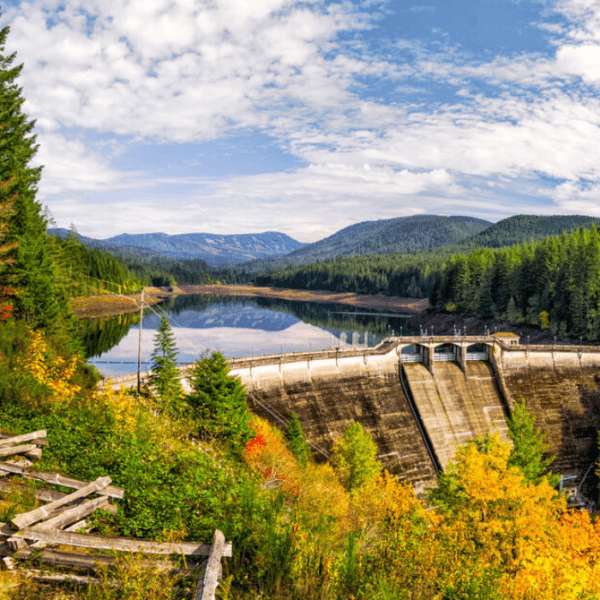A recent Environmental Protection Agency (EPA) Clean Water Act wetlands decision offers an important example of the new considerations facing the hydropower industry, as it seeks environmental approval for new projects.
Complex regulations affect hydropower projects in a number of areas, but the largest impact is on associated needs, such as access roads, power lines, and substations.
When the complexities of wetlands are combined with current litigation over the Clean Water Act, the hydropower industry encounters longer delays and uncertainty for permittees.
Hydropower developers looking to minimize permitting obstacles should:
- Ensure your team is thoroughly familiar with the new national guidance and the applicable practices of U.S. Army Corps of Engineers’ districts.
- Ensure your team members are current with the summary of guidance on post-Sackett jurisdictional information.
- Consider using preliminary jurisdictional determinations (PJDs) for smaller projects.
- Be courteous and patient with your Corps of Engineers permit manager.
Read on to learn more.

American Municipal Power (AMP) constructing a hydropower facility on the Army Corps of Engineers Louisville District Cannelton Dam.
UNDERSTANDING NEW PERMITTING CHALLENGES
If two areas of wetlands are separated by a road and there’s no surface flow between them, should the federal government treat them as separate bodies or a single area?
This question, which might seem like a philosophical puzzle, is actually a current, real-life issue facing federal officials as they navigate changes in environmental permitting due to the U.S. Supreme Court’s 2023 Sackett decision. Instead of delving into the legal intricacies of this decision and its intersection with Clean Water Act regulations, let’s examine a recent EPA wetlands decision as an example of the new considerations the hydropower industry must address to obtain environmental permitting approval for new projects.
In upstate New York, a jurisdictional wetland issue has arisen in the post-Sackett world. The proposed project in Orchard Park sits in an area with multiple wetlands, streams, and upland areas, with previously permitted impacts for a subdivision road right in the middle of a large wetland complex.
The Corps of Engineers’ draft approved jurisdictional determination (AJD) identified four wetland areas separated only by a subdivision road but connected via culverts, thus considering them one large wetland. These wetlands had a continuous surface connection to a traditional navigable waterbody, leading the Corps of Engineers to deem them jurisdictional and subject to regulation under Section 404 of the Clean Water Act.
However, an additional wetland area had no continuous surface connection to link it to other wetlands. It was separated by a road, and thus the Corps of Engineers deemed it non-jurisdictional in the draft AJD. The draft AJD was sent to the Environmental Protection Agency (EPA), as required by a memorandum of agreement. The EPA reviewed the document to determine whether these two areas functioned as a single wetland even though there was no culvert under the road providing a direct connection. While the Sackett decision focused on the term “continuous surface connection,” the EPA relied on its 2023 joint guidance with the Corps of Engineers, citing “shallow subsurface flow” to declare a linkage between these wetlands.
EPA also referenced the Technical Support Document for the Final “Revised Definition of ‘Waters of the United States” Rule (December 2022), which states : “Under longstanding agency practice, a wetland is also delineated as a single wetland if a human-made levee or similar artificial structure divides it, but a hydrologic connection is maintained between the divided wetlands.” As a result of the EPA action, the decision has been remanded back to the Corps of Engineers Buffalo District for review and a final determination using EPA guidance to investigate shallow subsurface flow as a hydrologic connection between the wetlands in question.
This example highlights the complexity, in legal, ecological, and hydrologic terms, of making wetland delineations under today’s rules. This complexity is unlikely to diminish, making the future of wetland delineations even more challenging.
IMPACT ON HYDROPOWER PROJECTS
For hydropower projects, these complex regulations are likely to have their largest impact on associated needs such as access roads, power lines and substations, and features in potential jurisdictional “waters of the United States.” Here are some recommendations for your permitting strategy:
- Ensure your team is thoroughly familiar with the new national guidance and the applicable Corps district’s practices. Work cooperatively with your permit managers in the Corps to provide a quality submission for your application for a jurisdictional delineation and/or 404 permit.
- Ensure your team members are current with the summary of guidance on post-Sackett jurisdictional information, including site-specific guidance as “Headquarters Field Memos.”
- Consider using preliminary jurisdictional determinations (PJDs) for smaller projects. PJDs stipulate that the waterbody in question is jurisdictional, which can move the project forward into processing faster. There will likely be requirements to document avoidance and minimization of impacts, as well as providing appropriate mitigation for unavoidable impacts.
- Lastly, be courteous and patient with your Corps of Engineers permit manager. These professionals are striving to provide good service and make timely decisions in a tumultuous time with minimal guidance.
This new complexity and uncertainty in defining what is a “water of the United States” are affecting federal reviews of all pending jurisdictional determinations and projects. EPA is using the “Headquarters Field Memos” as an opportunity to provide guidance through case-specific situations. Combining the complexity of wetlands with the current spate of litigation over the Clean Water Act, this situation will likely become more muddled and unclear, leading to longer delays and uncertainty for permittees.

The U.S. Army Corps of Engineers’ Hartwell Dam.
FOR MORE INFORMATION
Additional permitting news can be found at the Dawson & Associates blog (www.dawsonassociates.com/blog) and E&E News (www.eenews.net)
*Mark Sudol was Chief of the Army Corps of Engineers Regulatory Program and oversaw the Corps’ regulatory responses to Supreme Court decisions affecting permitting. Kamau Sadiki spent more than 35 years in the Corps of Engineers, including 12 years as National Hydropower Business Line Manager. They are Senior Advisors with the environmental permitting firm Dawson & Associates.












